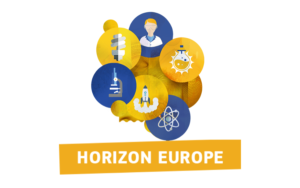
Acronym | PhotoTheraPort |
Grant Agreement ID | 101130883
|
Implementation period | 1.01.2024. – 31.12.2026. |
Coordinator | Institute for Bioengineering of Catalonia (IBEC), Spain
Professor Pau Gorostiza |
Programmes | HORIZON.3.1 – The European Innovation Council (EIC) |
Call for proposal | HORIZON-EIC-2023-PATHFINDEROPEN-01 |
Total Budget | € 2 999 840.00 (EU contribution
€ 2 999 840.00) |
Project participants | Latvian Institute of Organic Synthesis (LIOS, Latvia) |
Tampere University (TAU, Finland) | |
Technion Institute of Technology (TIIT, Israel) | |
Riga Stradins University (RSU, Latvia) | |
University of Cádiz (UCA, Spain) | |
Barcelona Institute for Biomedical Research (IIBB-CSIC, Spain) | |
Teamit Institute (TINS, Spain) | |
LIOS Budget | € 407 500.00 (EU contribution) |
Project leader in LIOS | Dr. Rossella Castagna |
A major difficulty in developing clinically useful treatments is to deliver therapeutic action with spatiotemporal precision and pharmacological specificity.
This unmet need is exemplified in
- neuropathic pain, which is due to abnormal inflammation and/or excitability of localized somatosensory nerves, sometimes resembling sudden stabbings or electric shocks
- epilepsy, a disease characterized by seizures that are due to a transient state of synchronized firing of a localized population of cortical neurons.
Inflammation can be treated with photobiomodulation (PBM) but requires localized delivery of light. These conditions can be also treated with neuroinhibitory drugs (e.g. inhibitors of sodium channels, potentiators of GABAa receptors) but their systemic adverse side effects pose limitations to their safety and efficacy, and once administered, their activity cannot be controlled.
To address this issue, we will use locally emitted light, which delivers anti-inflammatory action by PBM. It also allows turning on and off the pharmacological action of photoswitchable drugs locally and on demand.
To illuminate the target sites in the body, we will develop PhotoTheraPorts, light-emitting implants based on upconverting nanoparticles. Their visible light emission can be controlled remotely and noninvasively with infrared light applied externally through the tissue and bone. Their encapsulation offers high efficacy and long-term tolerability.
We will also develop suitable photoswitchable drugs with anti-inflammatory and neuroinhibitory activity, and we will preclinically test the efficacy and safety of both devices and drugs.
We will demonstrate preclinically a novel treatment modality to reduce inflammation and neuroinhibition locally and on demand, in well-established animal models of inflammatory and neuropathic pain (peripheral, spinal cord, brain cingulate cortex) and epilepsy (focal seizures), producing a deep impact in the management of these conditions.
